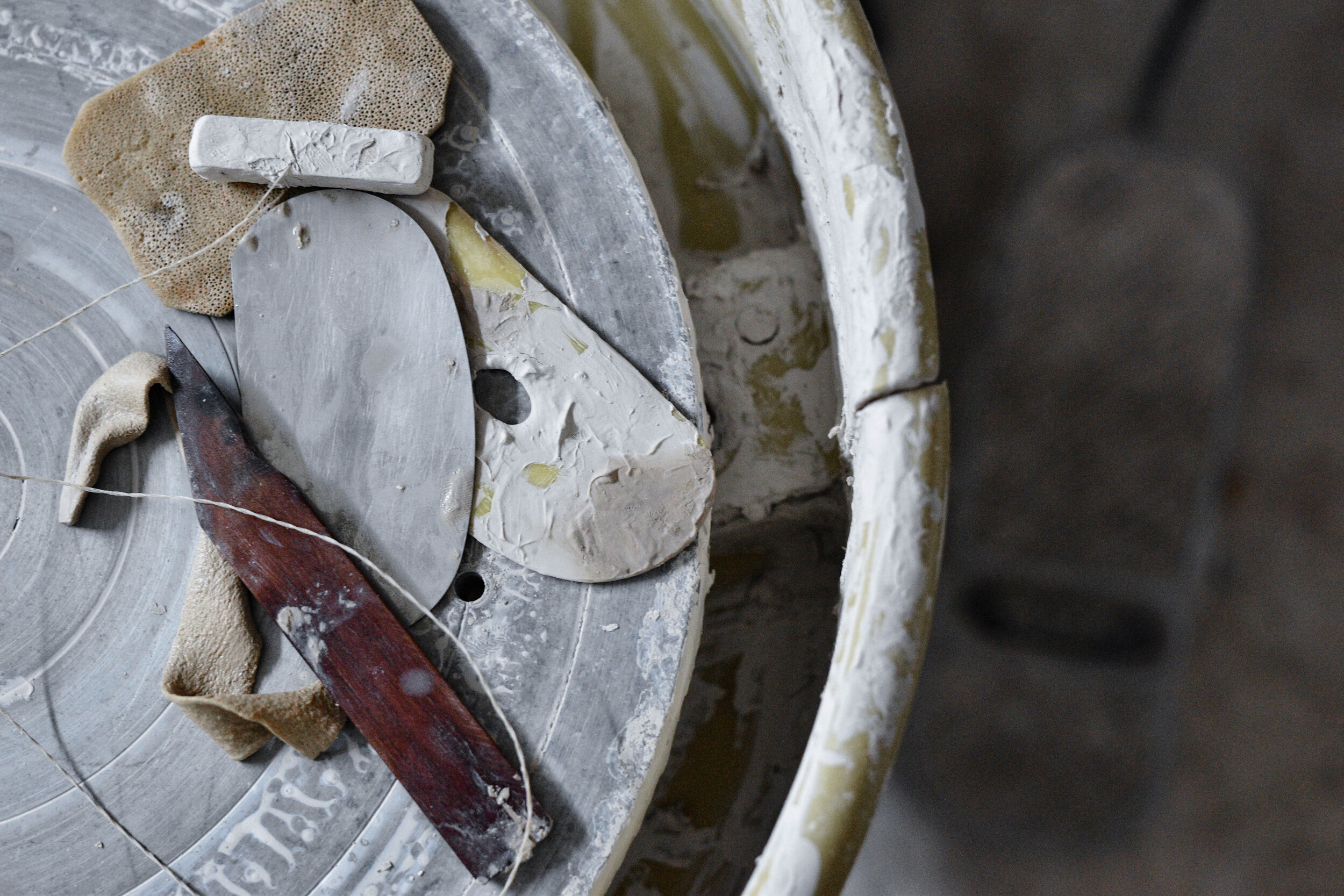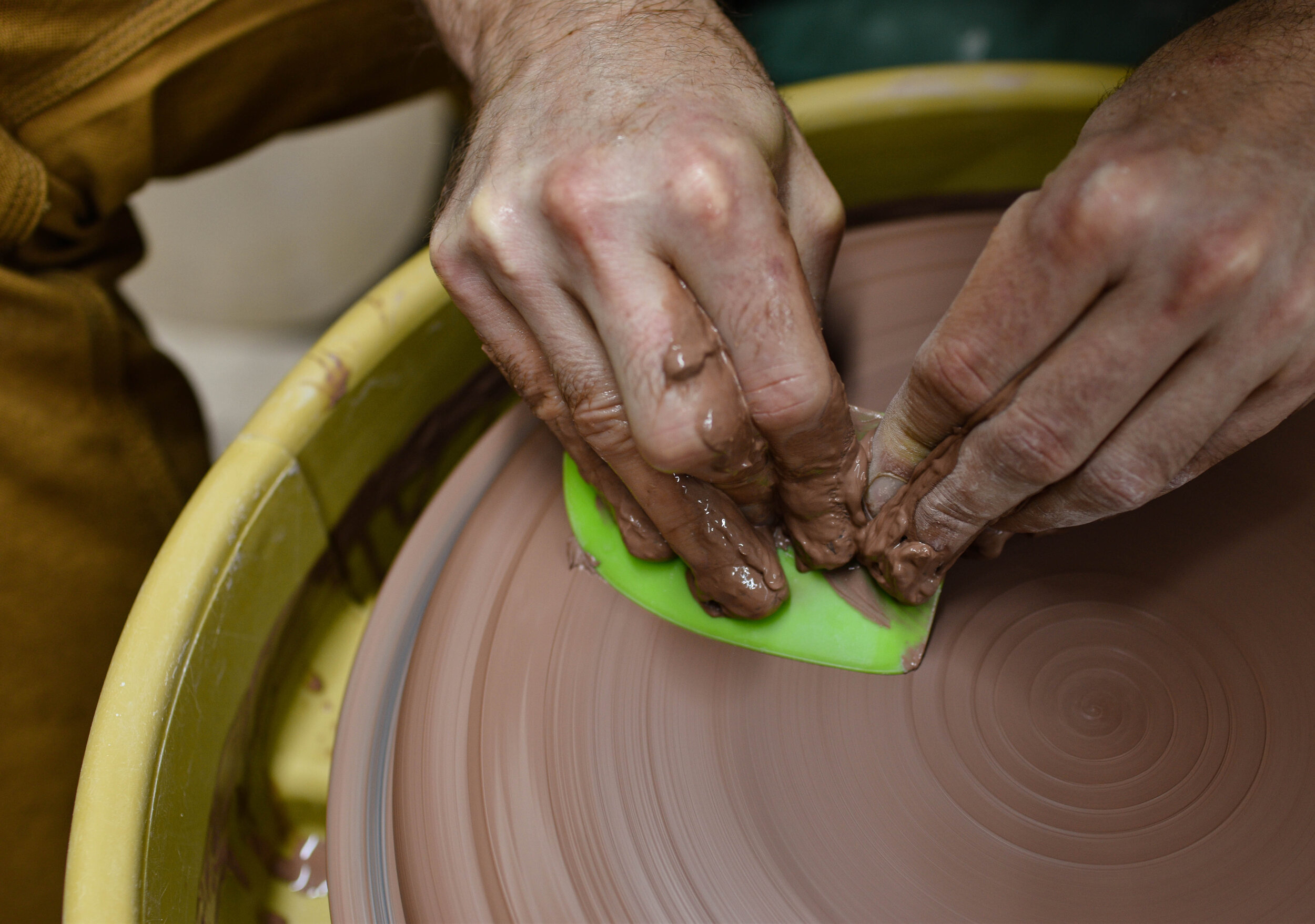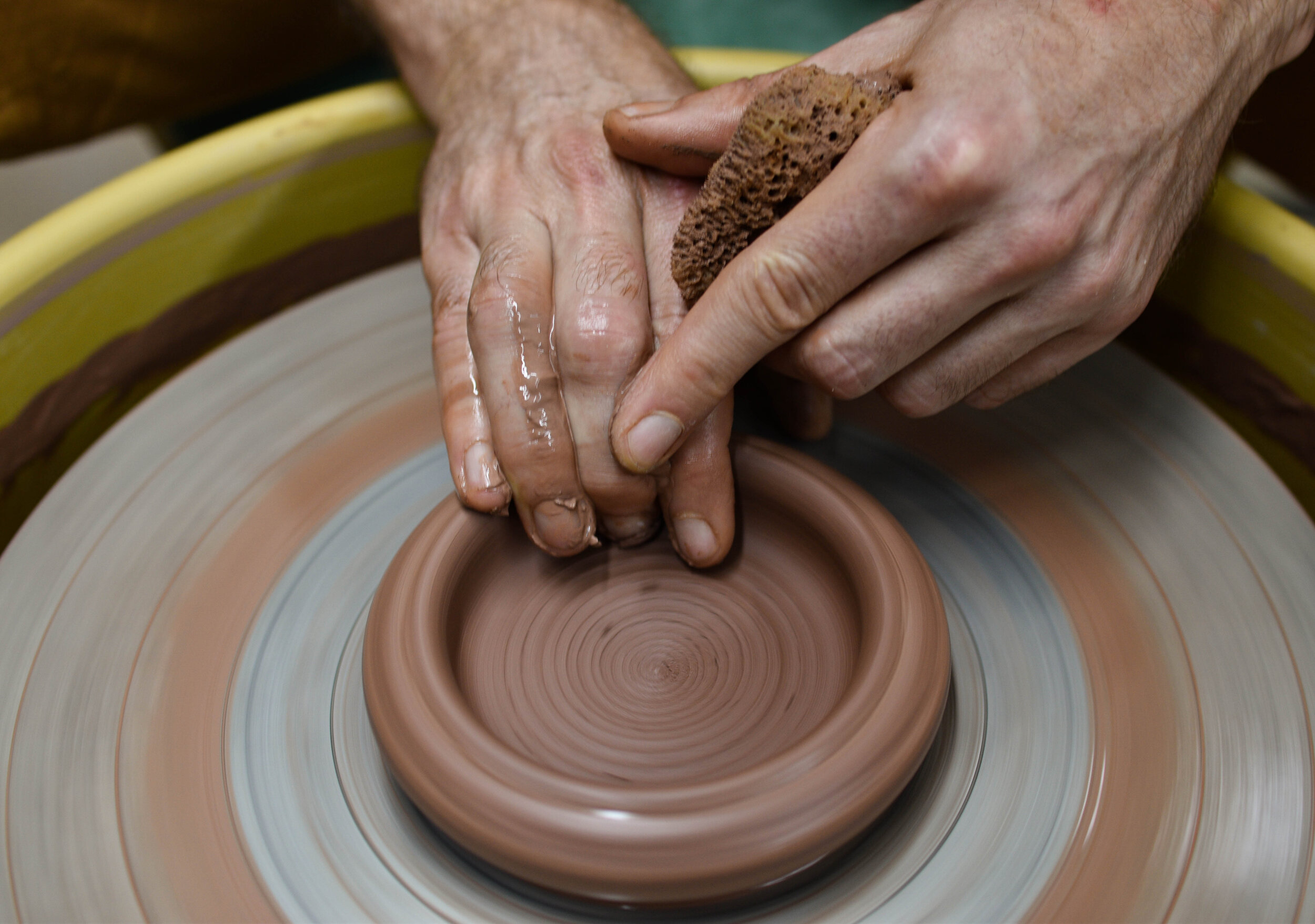
Making the form with Rob
Wet work on the wheel.
I’ve been pushing clay around on the wheel for coming up on two decades. I love the process of shaping clay on the wheel. It’s efficient and expressive. I view forming pots on the wheel almost like recording music to vinyl. As the wheel turns, the clay records every nuance of touch and gesture, and the process captures the energy of my movements, the deftness with which I handle my tools, and even little slips and oopses that make their way into the final product because I saw something beautiful in them. Function is my anchor, but I really enjoy tinkering with processes and techniques to find new ways to achieve the functional results I’m after. Although I’m fast and efficient at moving the clay up into a cylinder, or outward into the flowing curve of a bowl, I don’t approach my task of making forms with a production mindset. I like to be open to new possibilities, and I don’t worry about whether the pot I’m working on looks just like the last one. This dovetails really nicely with Jessica’s part of our making process because she spends so much time on each piece that an enormous production run of a single form would dry out before she could finish carefully considering each form and applying a surface decoration that enhances the whole unified piece.
Trimming/altering/handles at leather-hard.
When the clay reaches that leather-hard state, I can exert control over the finished form. I think of throwing the pot on the wheel like planting the seed and watching it spring up into life. Trimming and altering feels more like careful pruning to complete the outside curve of a bowl and punctuate it with an expressive foot. I love the way removing darts from a pottery form completely alters the character of a piece and gives it an attitude that symmetrical pieces rarely have. I also love how handles interact with the curve of a pot to create an interesting negative space that is in fact the space for the pot’s eventual owner to interact most directly with the form.
When I’m working with wet clay, I almost never touch it unless it is spinning. Once the pot reaches leather hard, I’m free to touch and refine the details of the piece. A quick swipe of the thumb or a bump from the heel of my hand softens the hard edges on the bottom of a mug. Gentle pressure from the pad of my finger can burnish the angles of a cut foot to make them both more functional and more pleasing to the eye. The interior shape of a handle can get perked up with the upward swipe of a damp finger. All the pieces of a teapot can be trimmed to fit and joined into a harmonious, functional whole. I tend to spend more time handling the pieces at the leather-hard stage than I do when I’m forming them on the wheel and the pace is more careful and considered.
Applying Slip in preparation for surface decoration.
At the dry end of the leather-hard phase, I apply a dynamic pour or dip of thin slip to many of the forms to create a lighter ground on which Jessica builds up layers of surface detail.. Cylinder-based forms like mugs and vases get a rather turbulent plunge into the bucket of slip, but only part of the way down toward the foot. I want to leave some of the dark clay exposed and to emphasize the irregular horizon line where the pot reached its greatest depth. I usually leave the bare spots of dark clay where my fingers kept the slip from reaching the clay surface, and I celebrate the thicker rivulets of slip that pour back off of my fingertips as I drain the excess slip back into the bucket. Open forms, especially platters, provide an opportunity for a creative dance of pouring slip and turning the piece over a bucket. Working on green pots, there is no do-over. The slip application has to be confident and direct, and the dynamic runs and variations in thickness provide a more complex canvas for Jessica to decorate.





























































































